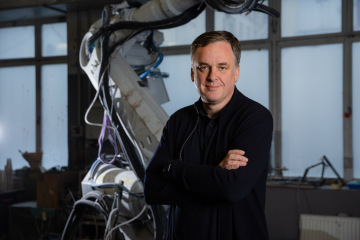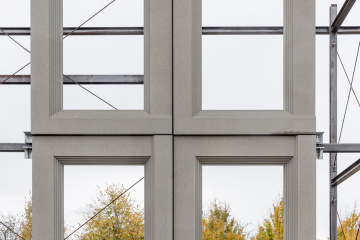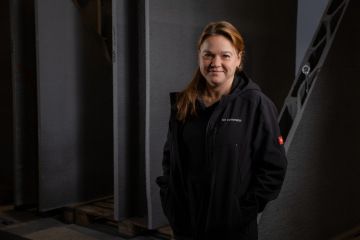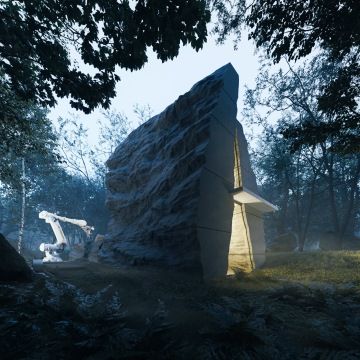
The transformation of today’s concrete jungles into green oases is the long-term vision of world-renowned Dutch architect Winy Maas. In this context, as well as others, he sees great potential in digital concrete, offering architects unprecedented possibilities.
Share article
It is Friday, a rainy spring morning in Prague’s Holešovice district. Architect and urban planner Winy Maas and artist Federico Díaz meet at the headquarters of So Concrete, in front of which towers a robot-printed, organically shaped column made of ultra-high-performance concrete. Despite working in different disciplines, they have found a common, passionate dialogue in recent months, catalyzed primarily by innovative materials and the increasingly important interconnection of professions. When talking with the renowned Dutch architect about his work, it quickly becomes apparent that his approach is fundamentally about connectivity—or, in other words, relationships. Relationships between people and nature, but also between representatives of different professions and even between various materials.
When asked why the theme of connectivity and the relationship between people and nature is so important to him, Winy Maas responds without hesitation: “The relationship between people and nature is crucial for the planet’s survival. There is no other way; it is an existential question. At our architectural studio, we strive to become more aware of this fact, primarily through research.” He refers to MVRDV, the studio famous for projects like the pavilion at EXPO 2000 in Hanover, the unmistakable blue rooftop extension of Didden Village in Rotterdam, the impressive Rotterdam Market Hall, and the reconstruction of the dictator Enver Hoxha’s monument in Tirana, which was transformed into a multifaceted technological center. In the Czech Republic, MVRDV became well-known for winning the competition to expand Terminal 1 at Prague Airport.
The relationship between people and nature is crucial for the planet’s survival. There is no other way; it is an existential question.
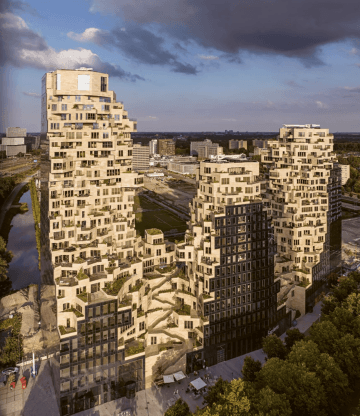
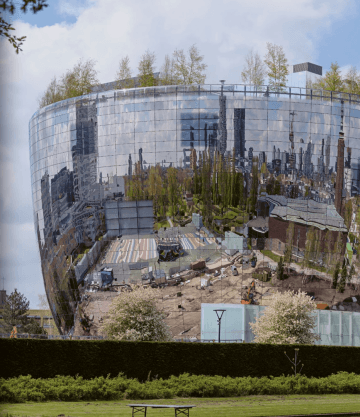
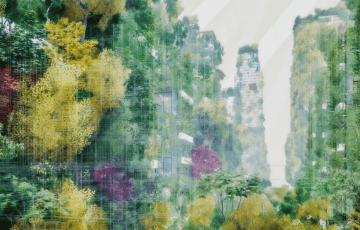
The architecture of Winy Maas and his colleagues is unconventional, some might even call it extravagant. However, it is not superficial; its flamboyance perhaps stems from Maas’s desire to draw attention to more fundamental issues facing the contemporary architectural community. How can new construction be sustainable? How can it connect people with nature, even in city centers? How can it be immersed in greenery? And how can we draw attention to these points?
This led Maas to establish The Why Factory, a research institute within MVRDV in collaboration with Delft University of Technology, exploring alternative construction methods and models for future cities.
"We thoroughly investigate the integration of buildings and flora, which can be facilitated by wall-mounted containers on façades for trees and plants to grow. Although many architects are working on this now, it can be radicalized—transforming all administrative complexes, all roofs, all housing in every community... This step has a different impact on each city, but when you do the math, you learn that it can reduce global temperatures by an average of one degree Celsius. It is definitely worth trying,” explains Winy Maas, describing one of his visions. However, he does not envision only green façades as we know them from some contemporary examples. His radicalization means that trees, grasses, plants, and shrubs would grow directly from façades. He explores this vision intensely in his newly published book, “The Green Dip”, subtitled “Covering the City with a Forest.”
Winy Maas emphasizes that even if contemporary cities are not as intensely immersed in greenery as his research institute envisions, current green roofs and façades still play a crucial role in improving the quality of life and local cooling. “It is the foundation of what we hope to achieve. Some may call it greenwashing, but I find that mean-spirited. It is an effort worth appreciating. I disagree when someone sees a withered plant on a green roof and immediately shouts, ‘Look, it doesn’t work!’ That has nothing to do with the principle of green roofs not working. Such projects should be defended because they significantly impact local cooling—there is plenty of evidence for that,” he explains.
According to the architect, it is not just about relationships between people and plants, but also with other living creatures. “Take mosquitoes—people hate them. Or mice, which are banned from our homes, but still, they are our friends; we need them on board. It is about finding a balance, giving these creatures space in our lives, allowing them to survive in our society. Diversity is crucial for us too,” adds Winy Maas. A city can be seen as a biotope, not just a community of people and concrete. Fortunately, strengthening the relationship between people and nature is not just a utopian vision. Maas cites the current approach in Amsterdam, where an extensive reconstruction of the canal system that shapes the city’s character is underway. After centuries of existence, the canal walls are starting to crumble. The city has launched an extensive and costly project to restore them, incorporating, for example, designs that allow aquatic creatures to build hideouts in the walls.
According to Winy Maas, plants and animals are not the only factors in contemporary architecture’s foundation. A third crucial aspect is the approach to recycling and how we use known materials and innovate them. “Materials research is progressing, but all materials are highly specialized and cannot be interconnected. They develop separately, have different properties, and when it comes for the time to recycle them—to ideally create something reusable—we hit a wall. We need to achieve an ecological ‘cooperation’ or ‘blends’ of individual materials,” says Maas. He adds that such an ecological mix can produce materials with new properties. Thus, façades, walls, or roofs can give light or can be lighter and easier to handle when it is time to change or dismantle them. Sustainability lies in the flexibility of new constructions.
We thoroughly investigate the integration of buildings and flora, which can be facilitated by wall-mounted containers on façades for trees and plants to grow.
This brings us back to the beginning of the Holešovice meeting. Winy Maas and Federico Díaz discussed, among other things, the role UHPC, or digital concrete in So Concrete’s case, could play in future cities. So Concrete combines the properties of an innovative material with robotic fabrication, programming, and engineering knowledge in the construction industry. This can result in objects that are less energy-intensive to produce, require far less material input, are lighter, and can come in countless shapes, textures, and sizes. Digital concrete exemplifies what happens when experts from different fields collaborate creatively.
For Winy Maas, this means complete freedom in designing objects “immersed in greenery.” He can envision façades covered with special pockets for plants, even trees—digital concrete is ideal for their manufacture. Or he can have almost any volume digitally shaped from an innovative material, serving decorative, practical, or even residential functions. “Digital concrete can be an excellent material, as they are inert, especially for projects situated in deserts. You do not need to build a large factory on the location; with robots, you can print projects using local resources right on the site. That is fantastic. The concrete we work with today is not sustainable at all; it is based on technologies that can be considered ancient. If any material needs transformation, it is this one, but we have to be able to un-print it as we speak to generate on-time recycling...” concludes Winy Maas.
Share article
More news
Pavel Grečner, Technical Director of So Concrete
“Let’s think ahead.” This quote from one of our presidents perfectly captures the mindset of Pavel Grečner, Technical Director at So Concrete.
Impact test of facade elements for the OLOE office building
The OLOE office building, which is part of the southern part of Prague's vast new Smíchov City district, will receive a facade, the first segments of which are currently being tested as part of the so-called impact test.
Marie Kovářová, CEO of So Concrete
"Everything is possible when there’s a will. And a good team can achieve much more than any individual," says Marie Kovářová, the new CEO of So Concrete.
Share article
More news
Pavel Grečner, Technical Director of So Concrete
“Let’s think ahead.” This quote from one of our presidents perfectly captures the mindset of Pavel Grečner, Technical Director at So Concrete.
Impact test of facade elements for the OLOE office building
The OLOE office building, which is part of the southern part of Prague's vast new Smíchov City district, will receive a facade, the first segments of which are currently being tested as part of the so-called impact test.
Marie Kovářová, CEO of So Concrete
"Everything is possible when there’s a will. And a good team can achieve much more than any individual," says Marie Kovářová, the new CEO of So Concrete.
